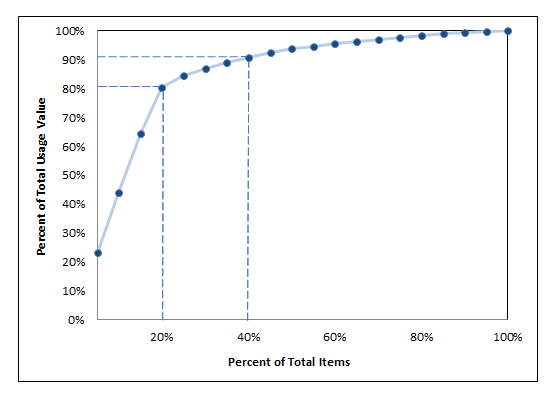The ABC analysis is one of the tools the most used in logistics and needs to be well understood. The ABC analysis, also called the ABC Classification or Pareto Theorem (named after its creator), was born when he realized that 80% of the wealth was in the hands of only 20% of the population. This is known as the 80/20 rule and is very useful in administrative processes and logistics as we will see in this post.
As well as much of the wealth was concentrated in a small part of the population, in many companies much of the work is due to a few products, most inventory costs are due to few expensive items, and much of the revenue comes from few sales.
Keeping this in mind, you should direct resources, efforts and staff to manage the most important and expensive items and the most profitable customers – these should always be treated with special attention.
Where can an ABC classification (or analysis) be used?
In logistics, the ABC analysis is widely used to control inventory. Some products are more important than others and need to be treated as such. You can separate items in the inventory according to some criteria: product turnover, ratio of sales, profit margin, cost of inventory or any other other relevant factor.
Items in the A class are those of major importance (value, quantity, cost) and should represent about 20% of items or 80% of cost (or profit, quantity, etc).
Items in the B class are of intermediate importance and represent around 30% of the items.
The remainder 50% of the items should lie in the C class.
How to separate items into classes: A, B or C?
Using a simple spreadsheet, it is possible to quickly build an ABC classification. With inventory and cost data (for all products), organize them in descending order of cost. Add up the entire cost and then calculate the percentage that each product represents from the total cost.
Then, just sum up the first few lines until you find 80% of the costs (this should represent around 20% of the products). These products will be those that will make up the A class of the ABC classification. The idea continues to get the classes B and C.
Some items, however, should be included in the “A class” because they are strategic, linked to supply contracts or for marketing reasons. There must be few items in this situation, but they deserve a different treatment.
With this information, you already know how to efficiently control the inventories, directing efforts and resources to the most important items in your business.
